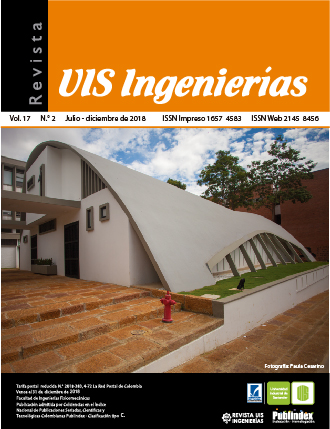Publicado 2018-05-07
Palabras clave
- homogeneización,
- espuma de aluminio,
- red neuronal,
- machine learning
Cómo citar
Resumen
En la industria actual, el uso de materiales resistentes, rígidos, de bajo peso y con buenas propiedades tanto acústicas como térmicas es de gran interés. Entre estos materiales encontramos las espumas de aluminio. Para su uso, es necesario conocer su comportamiento estructural. Para la obtención de la geometría de una espuma de aluminio se pueden plantear diversas técnicas, todas ellas basadas en que la información inicial proviene de una imagen obtenida mediante una Tomografía Axial Computarizada (TAC). Una posible metodología, conocida comúnmente como segmentación, consiste en generar un CAD a partir de la imagen y de ahí el modelo de Elementos Finitos (EF). Otra opción es usar técnicas como el CellFEM o el cgFEM, donde cierta cantidad de píxeles, que definen las propiedades del material, son embebidos en cada elemento. De entre los diversos métodos que existen para evaluar la matriz de propiedades del material, en este trabajo se propone el uso de técnicas de homogeneización aceleradas mediante técnicas de machine learning. Dicha técnica se ha aplicado a problemas reales obteniendo un elevado speed up sin sacrificar la precisión.
Descargas
Referencias
J. Banhart, “Aluminum foams for transport industry,” Materials and Design, vol. 18, pp. 217–220, 1997.
J. Parvizian, A. Düster, and E. Rank, “Finite cell method,” Computational Mechanics, vol. 41, no. 1, pp. 121–133, sep 2007. [Online]. Available: http://link.springer.com/10.1007/s00466-007-0173-y
A. Düster, J. Parvizian, Z. Yang, and E. Rank, “The finite cell method for three-dimensional problems of solid mechanics,” Computer Methods in Applied Mechanics and Engineering, vol. 197, no. 45-48, pp. 3768–3782, aug 2008. [Online]. Available: http://www.sciencedirect.com/science/article/pii/S0045782508001163
L. Giovannelli, J. J. Ródenas, J. M. Navarro, and M. Tur, “Direct medical image-based finite element modelling for patient-specific simulation of future implants,” Elsevier Ltd, 2017.
E. Nadal, “Cartesian grid FEM (cgFEM): High performance hadaptive FE analysis with ecient error control. Application to structural shape optimization,” Ph.D. dissertation, Universitat Politècnica de València, 2014.
M. Tur, J. Albelda, O. Marco, and J. J. Ródenas, “Stabilized method of imposing Dirichlet boundary conditions using a recovered stress field,” Computer Methods in Applied Mechanics and Engineering, vol. 296, pp. 352–375, aug 2015. [Online]. Available: http://www.sciencedirect.com/science/article/pii/S0045782515002467
M. Tur, J. Albelda, E. Nadal, and J. J. Ródenas, “Imposing Dirichlet boundary conditions in hierarquical cartesian meshes by means of stabilized Lagrange multipliers,” International Journal for Numerical Methods in Engineering, vol. Accepted, 2013.
[Online]. Available: https://es.mathworks.com/help/images/ discrete-cosine-transform.html
M. Lobo and M. E. Pérez, “Problemas de homogeneización en la ingeniería. Una experimentación numérica,” Revista Internacional de Métodos Numéricos para Cálculo y Diseño en Ingeniería, vol. 7, no. 4, pp. 455–472, 1991.
J. Schröder, “Constraint/boundary conditions on the microscale,” A numerical two-scale homogenization scheme: the FE2- method, Udine, 2014.
M. Hagan and M. B. Menhal, “Training feedforward networks with the marquardt algorithm,” IEEE transactions on neural network, vol. 5, no. 6, pp. 989–993, 1994.
I. W. Sandberg, “Feedworward neural networks: An introduction,” Nonlinear Dynamical Systems: Feedforward Neural Network Perspectives, Wiley and Sons, 2001.
H. Damuth and M. Beale, “Faster training,” Neural Network Toolbox User Guide, The MathWorks, Inc, 2002.

